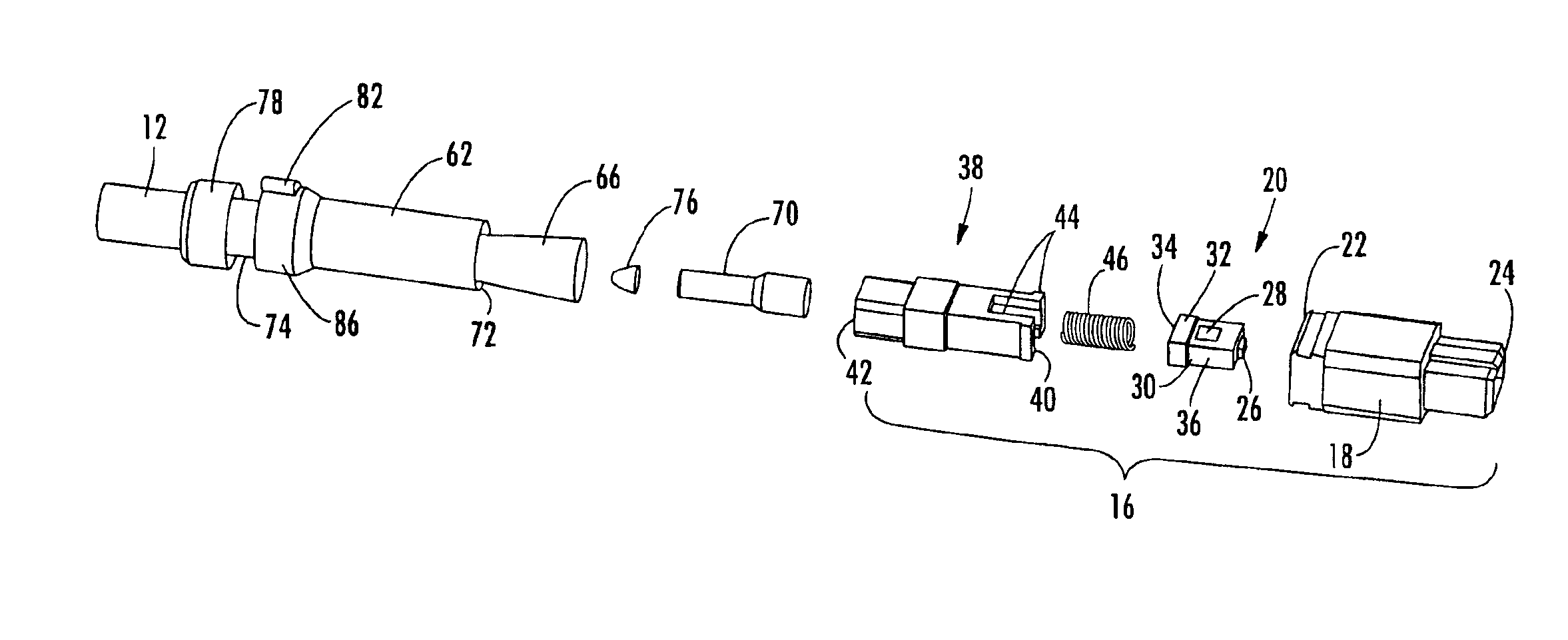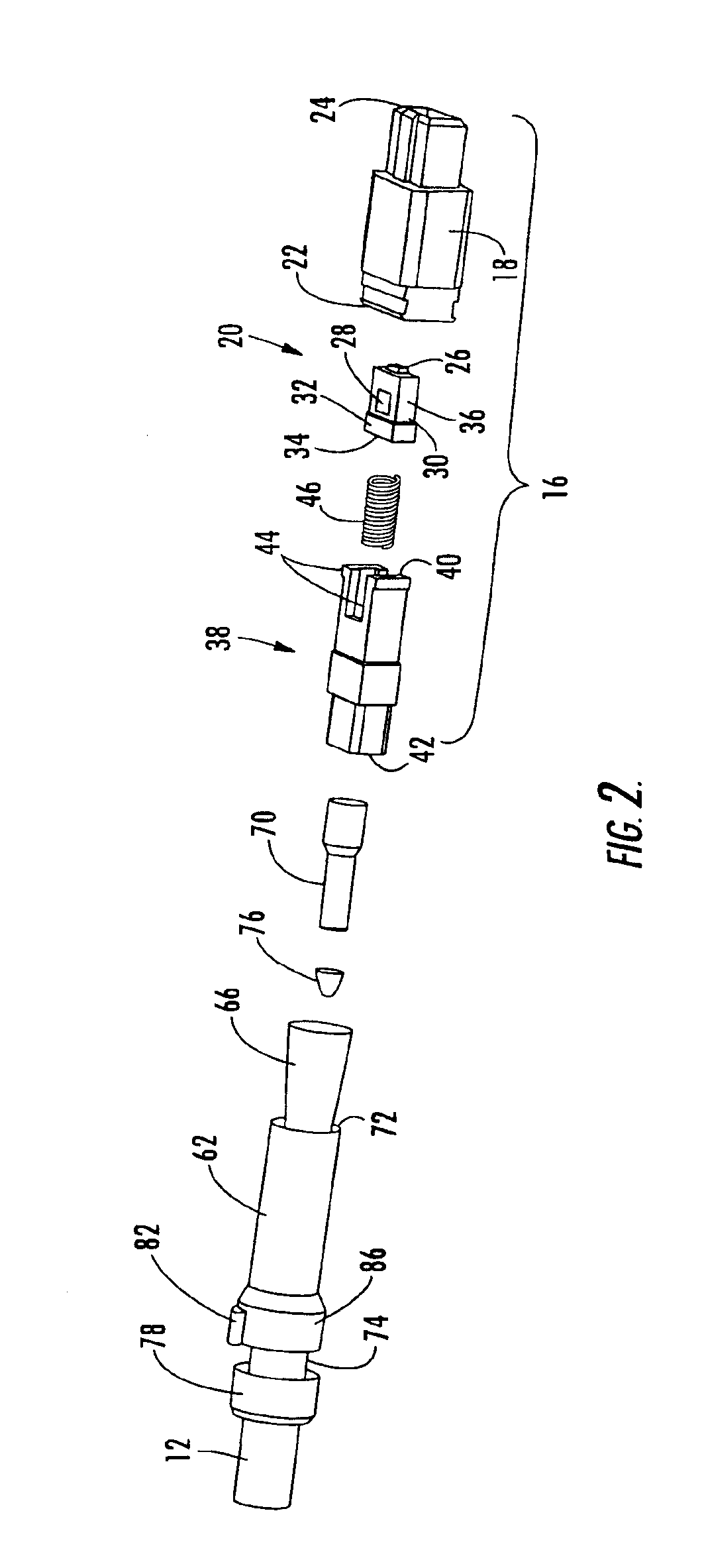Fiber optic plug and receptacle assembly
a technology of fiber optic plugs and receptacles, applied in the field of assembly, can solve the problems of fiber optic cable being subjected to torque-generating forces, fiber optic cable being disadvantageously increased, and the mechanical coupling between the fiber optic connector and the adapter sleeve limiting the float between the plug ferrule and the adapter sleev
- Summary
- Abstract
- Description
- Claims
- Application Information
AI Technical Summary
Benefits of technology
Problems solved by technology
Method used
Image
Examples
Embodiment Construction
[0032]This invention now will be described more fully hereinafter with reference to the accompanying drawings, in which preferred embodiments of the invention are shown. This invention may, however, be embodied in many different forms and should not be construed as limited to the embodiments set forth herein; rather, these embodiments are provided so that this disclosure will be thorough and complete, and will fully convey the scope of the invention to those skilled in the art. Like numbers refer to like elements throughout.
[0033]Referring to FIG. 1, a fiber optic plug 10 according to one embodiment of this invention is depicted. The fiber optic plug is mounted upon the end portion of a fiber optic cable 12 and is adapted to mate with a corresponding fiber optic receptacle. Typically, the receptacle provides access to an enclosure or the like such that the optical fibers (not shown) extending from the fiber optic cable may be aligned with and optically interconnected with optical fi...
PUM
 Login to View More
Login to View More Abstract
Description
Claims
Application Information
 Login to View More
Login to View More - R&D
- Intellectual Property
- Life Sciences
- Materials
- Tech Scout
- Unparalleled Data Quality
- Higher Quality Content
- 60% Fewer Hallucinations
Browse by: Latest US Patents, China's latest patents, Technical Efficacy Thesaurus, Application Domain, Technology Topic, Popular Technical Reports.
© 2025 PatSnap. All rights reserved.Legal|Privacy policy|Modern Slavery Act Transparency Statement|Sitemap|About US| Contact US: help@patsnap.com



